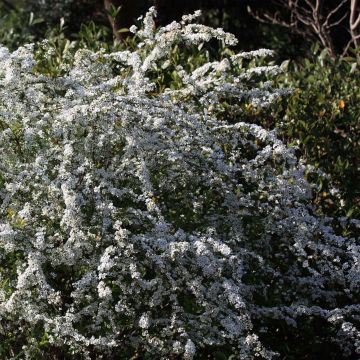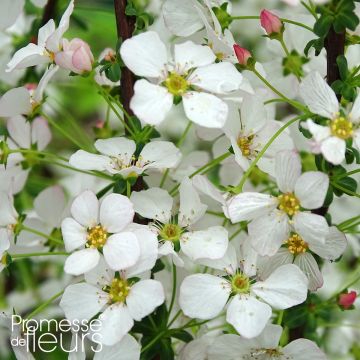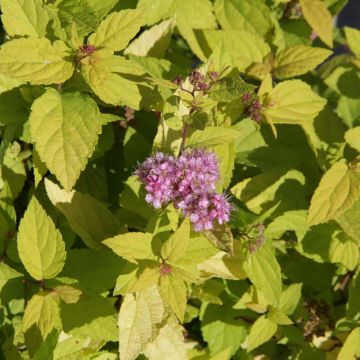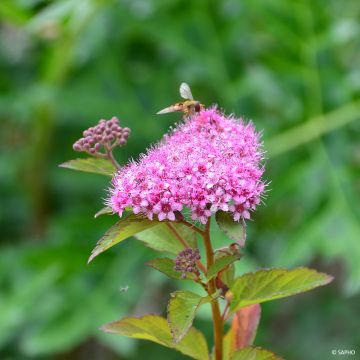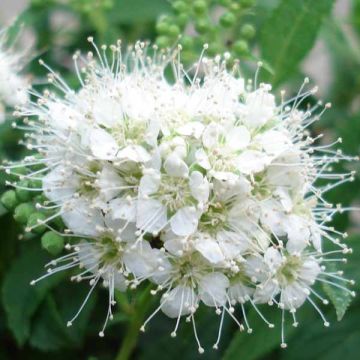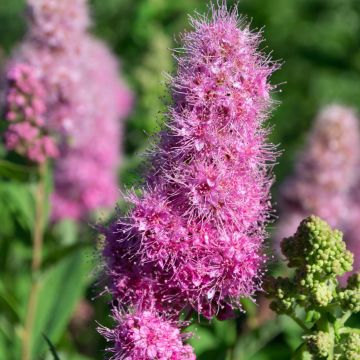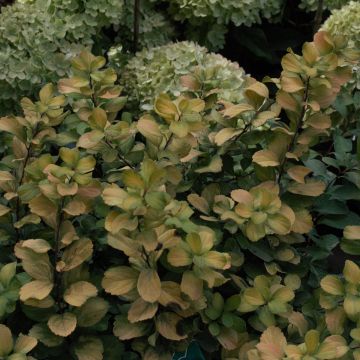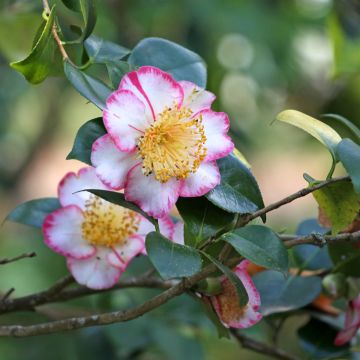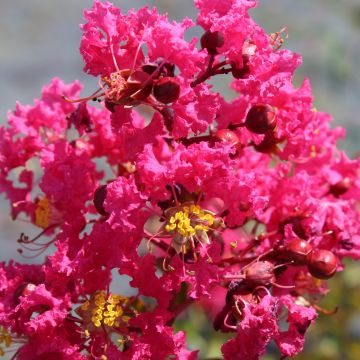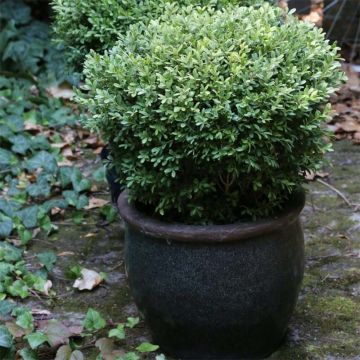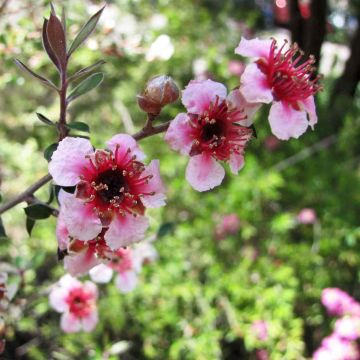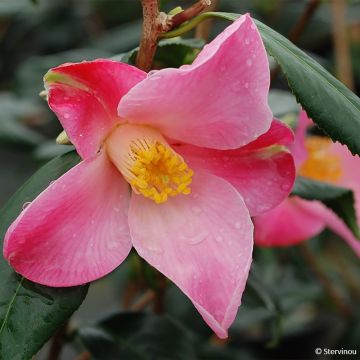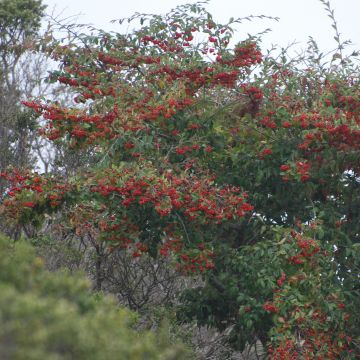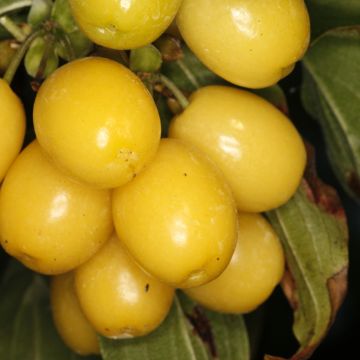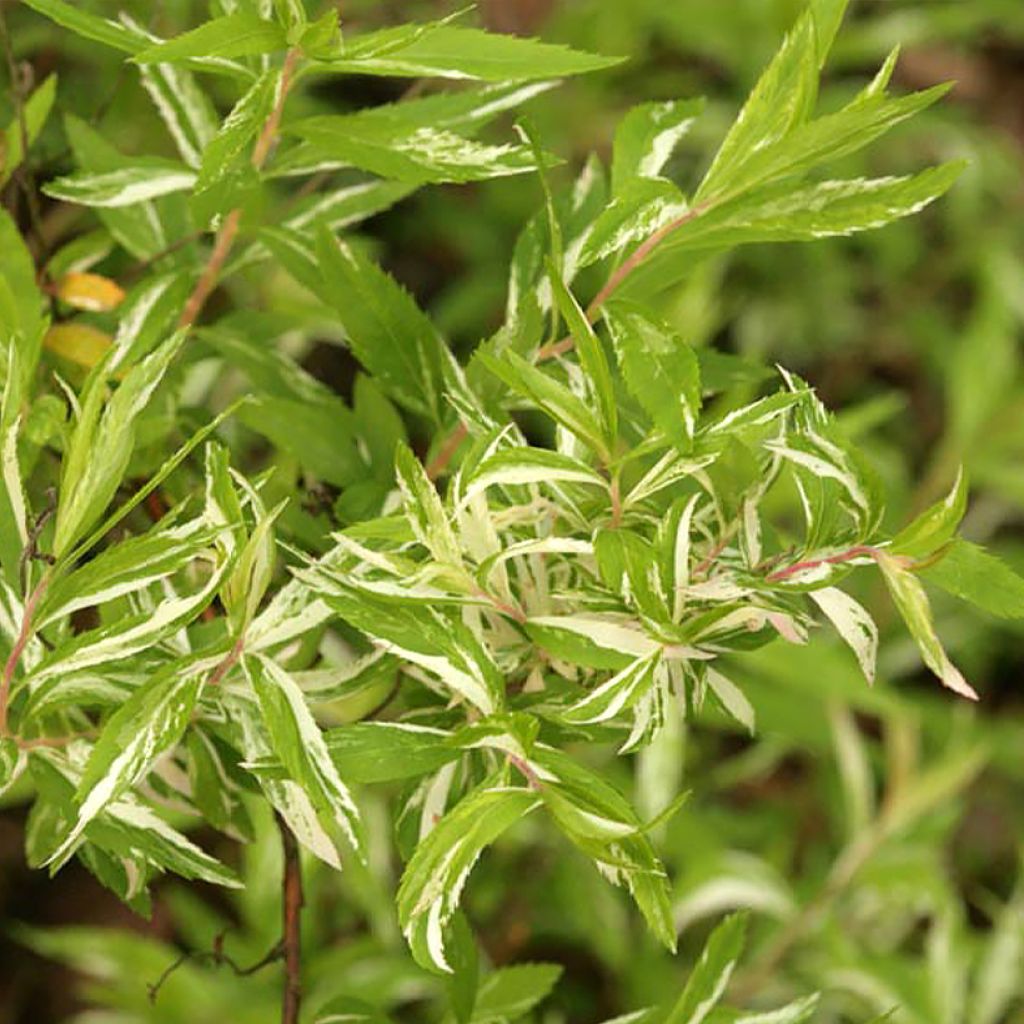

Spiraea thunbergii Mount Fuji - Japanese Spiraea
Spiraea thunbergii Mount Fuji - Japanese Spiraea
Spiraea x thunbergii Mount Fuji
Japanese Spiraea, Japanese Meadowsweet
This item cannot be shipped to the selected country
Delivery charge from €6.90
More information
Delivery charge from €6.90
More information
Schedule delivery date,
and select date in basket
This plant carries a 24 months recovery warranty
More information
We guarantee the quality of our plants for a full growing cycle, and will replace at our expense any plant that fails to recover under normal climatic and planting conditions.
From €7.90 for pickup delivery and €6.90 for home delivery
Express home delivery from €8.90.

Does this plant fit my garden?
Set up your Plantfit profile →
Description
Spiraea thunbergii 'Mount Fuji' is a variety of variegated Spirea that is not widely cultivated. Its willow-like leaves are randomly variegated with cream, giving the shrub a delicate appearance. In autumn, the foliage turns yellow and orange. It has an early spring flowering, with white to pink flowers blooming along its slender branches. With its modest size, the shrub has a delicate appearance that belies its very hardy nature. Showcase this spirea by planting it as a standalone specimen on a lawn or by pairing it with other early-flowering shrubs in a border or small flowering hedge.
Thunberg Spirea, also known as "baby's breath", belongs to the Rosaceae family. This long-lived botanical species is native to China and has been cultivated in Japanese gardens for a long time. The cultivar 'Mount Fuji' is a fast-growing shrub with slender branches. Its somewhat unusual habit resembles a slightly dishevelled bouquet. The branches are initially upright and become more or less trailing and twisted at the ends. Eventually, the plant will reach a size of between 1m and 1.50m in all directions. The abundant flowering occurs between late March and April, depending on the climate, just before the leaves appear. The white flowers, with five petals, are solitary or grouped in small clusters along the previous year's branches. They are followed by fruit that has no horticultural interest but is attractive to birds for feeding. Spiraea thunbergii 'Mount Fuji' (sometimes marketed as 'Variegata') develops dense foliage that is semi-evergreen in mild climates and deciduous elsewhere. Its variegated leaves are thin and measure 4cm long by 1.5cm wide. The soft-textured lamina has coarse, toothed margins. The foliage takes on beautiful shades of golden yellow, salmon pink, or bright orange when exposed to cold temperatures.
The infinitely graceful 'Mount Fuji' Thunberg Spirea is one of the first shrubs to bloom in spring. This early flowering, so appreciated when winter seems never-ending, extends the flowering period of borders and beds. It can be planted in groups of three, as a large border, or even as a small flowering hedge. To create a beautiful and delicate spring ensemble, it can be paired with a 'Raspberry Profusion' Abelia covered in flowers from May to October, a 'Cameo' Japanese Quince flowering from March, or a Prunus x cistena, which is also one of the first flowering shrubs. The 'Annelies' shrub rose will take over until October. Spiraea thunbergii 'Mount Fuji' fits well in Japanese, English, naturalistic, country and romantic gardens, as well as in small city gardens.
Plant habit
Flowering
Foliage
Botanical data
Spiraea
x thunbergii
Mount Fuji
Rosaceae
Japanese Spiraea, Japanese Meadowsweet
Cultivar or hybrid
Other Spiraea
View all →Planting and care
Plant Spiraea thunbergii 'Mount Fuji' in moist to dry, deep, well-drained soil that is neutral to acidic or slightly alkaline (pH 6.5<pH<7.5), even poor soil. This undemanding bush thrives in full sun or partial shade. To maintain the plant's vigour, it is important to remove old branches at the base in spring. Lightly prune if necessary after flowering by removing half of their length from faded shoots. This plant blooms on the previous year's branches. Apply a complete fertiliser every year in March.
Planting period
Intended location
Care
This item has not been reviewed yet - be the first to leave a review about it.
Hedge shrubs
Haven't found what you were looking for?
Hardiness is the lowest winter temperature a plant can endure without suffering serious damage or even dying. However, hardiness is affected by location (a sheltered area, such as a patio), protection (winter cover) and soil type (hardiness is improved by well-drained soil).

Photo Sharing Terms & Conditions
In order to encourage gardeners to interact and share their experiences, Promesse de fleurs offers various media enabling content to be uploaded onto its Site - in particular via the ‘Photo sharing’ module.
The User agrees to refrain from:
- Posting any content that is illegal, prejudicial, insulting, racist, inciteful to hatred, revisionist, contrary to public decency, that infringes on privacy or on the privacy rights of third parties, in particular the publicity rights of persons and goods, intellectual property rights, or the right to privacy.
- Submitting content on behalf of a third party;
- Impersonate the identity of a third party and/or publish any personal information about a third party;
In general, the User undertakes to refrain from any unethical behaviour.
All Content (in particular text, comments, files, images, photos, videos, creative works, etc.), which may be subject to property or intellectual property rights, image or other private rights, shall remain the property of the User, subject to the limited rights granted by the terms of the licence granted by Promesse de fleurs as stated below. Users are at liberty to publish or not to publish such Content on the Site, notably via the ‘Photo Sharing’ facility, and accept that this Content shall be made public and freely accessible, notably on the Internet.
Users further acknowledge, undertake to have ,and guarantee that they hold all necessary rights and permissions to publish such material on the Site, in particular with regard to the legislation in force pertaining to any privacy, property, intellectual property, image, or contractual rights, or rights of any other nature. By publishing such Content on the Site, Users acknowledge accepting full liability as publishers of the Content within the meaning of the law, and grant Promesse de fleurs, free of charge, an inclusive, worldwide licence for the said Content for the entire duration of its publication, including all reproduction, representation, up/downloading, displaying, performing, transmission, and storage rights.
Users also grant permission for their name to be linked to the Content and accept that this link may not always be made available.
By engaging in posting material, Users consent to their Content becoming automatically accessible on the Internet, in particular on other sites and/or blogs and/or web pages of the Promesse de fleurs site, including in particular social pages and the Promesse de fleurs catalogue.
Users may secure the removal of entrusted content free of charge by issuing a simple request via our contact form.

































